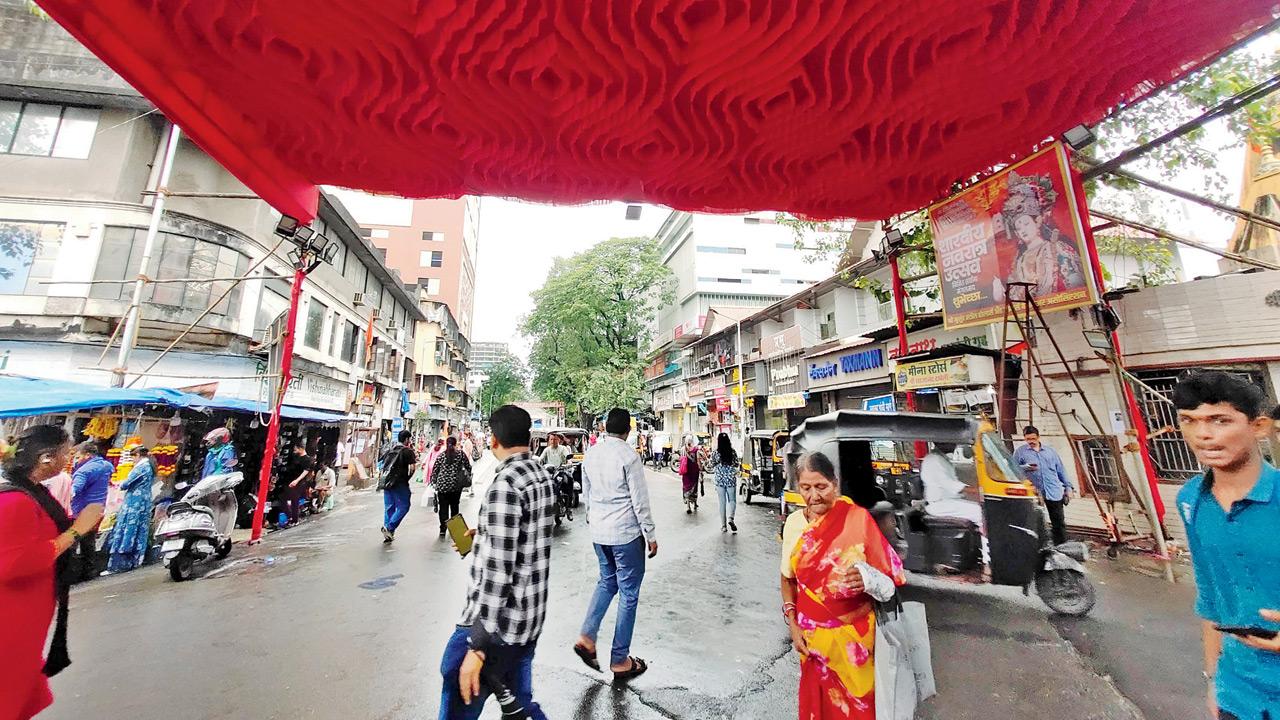With each passing year, come Navratri, and it’s almost mandatory for Mulund West to up its celebratory game. Its roads and lanes are plastered with even bigger banners, announcing and inviting the faithful to nine nights of festivities. Most of these eyesores are large enough to block the view of the last surviving two- to three-storeyed residential buildings and the trees that were once common across the suburb.
Many of these quaint residences were built in the bungalow-style. They had traditional facades, similar to homes in Gujarat—a fact I learnt about years later. Some had courtyards with wells in the centre. These homes boasted wooden chhajas (awnings), balustrades, long curvilinear balconies, sprawling porches with swings, and patches of green.
These precious observations were part and parcel of a game I would play as a schoolkid. My school bus would crisscross most of the heart of the suburb en route to school and back home. With no classmates along the same route, I preferred to stare out of the window. Soon, I got fascinated with the names of the streets—Zaver Road, Rattanshi Hirji Bhojraj Road, Sevaram Lalwani Road, Dr Ambedkar Road, Goshala Road, and Walji Ladha Road. I took it upon myself to memorise these street names.
Slowly, this became a game I would play to challenge myself to remember these street names. It worked like a charm, and over time, I had memorised all the street names along the school bus route. While this game helped me learn about the geography of the suburb, it also made me realise that my well-planned suburb, which builders have been declaring as the “Prince of Suburbs” for a while now, was way ahead of its time. It was a true-blue example of a resident-friendly, well-planned suburb.
I recall boasting to friends from other suburbs that they’d never get lost—[in the pre-Google Maps era]—here, and would somehow find their way to the railway station, thanks to this grid road network.
When I say well-planned, my research leads me to Meher Marfatia’s book based on her column *Once Upon a City* in Sunday *mid-day*. Here, streets—including the ones I mentioned earlier—run at right angles to each other from the railway station all the way to Panch Rasta junction. This was the vision of Jhaverbhai Shah, a zamindar who owned acres of land in this area.
In 1922, he had commissioned architectural firm Crown & Carter to design this suburb, and their foresight led to giving us a brilliant example of street planning of the most inspired kind.
Its proximity to the boundary of the Sanjay Gandhi National Park is a boon, with its verdant green cover spilling over across the entire suburb. Till date, temperatures here are a couple of degrees lower than the rest of the city and suburbs.
But change is in the air. Actually, it has been for a while now.
What those festive banners also veil are the stumps of countless hacked trees and destroyed footpaths, often victims of greedy builders and developers who have taken over the streetscape of the suburb at a shockingly rapid pace. The lockdown was when I recall witnessing a substantial amount of green cover disappear, as well as the fadeout of residential buildings from the 1930s, 40s, and 50s. Many included those buildings that lined the route on my school bus ride.
Today, they are gone, and in their place, glass and marble monstrosities stand. They block the sun’s rays from reaching the ground; pavements are now ramps for expensive cars to move out of driveways, and trees have been mindlessly chopped, even if their branches brush past prison-wall-like boundaries of these towers. It’s a sad sight each time I walk past these streets.
The irony is not lost when I notice how many of these new suburban disruptors have christened these upscale residences with names that allude to tree species and green views.
As I write down this column, I dread that another JCB or two are heading Mulund-ward to set up another housing project. I can also expect many advertisements this festive season, wooing more to move into these tree-lined townships.
It’s only a matter of time before the gentrification is complete—and the green cover lost forever. The chhaja has given way to the sundeck.
*mid-day’s* Features Editor Fiona Fernandez relishes the city’s sights, sounds, smells, and stones—wherever the ink and the inclination take her. She tweets @bombayana.
Send your feedback to [email protected].
https://www.mid-day.com/news/opinion/article/disruption-in-progress-23595137


